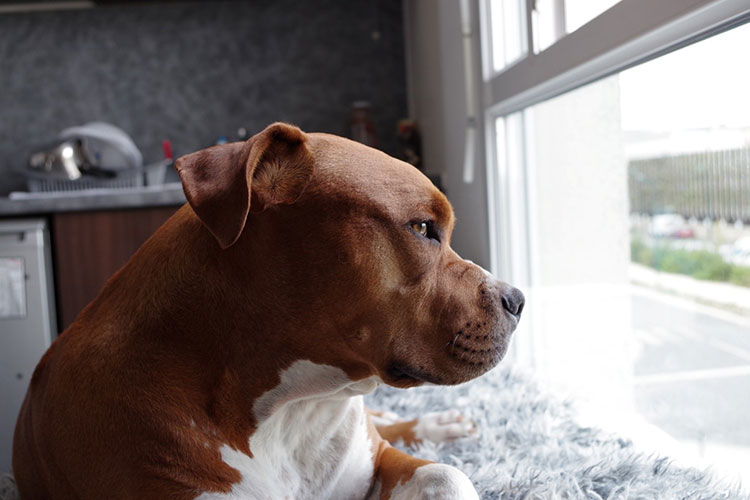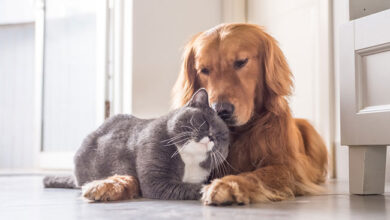
Bringing a disabled Pitbull into your home can be a rewarding experience filled with love and companionship. However, caring for a disabled dog requires extra attention, patience, and specialized care. Whether your Pitbull has mobility issues, a sensory impairment, or a chronic health condition, these ten tips will help you provide the best possible care for your beloved pet.
1. Consult with Your Veterinarian Regularly
Regular veterinary check-ups are crucial for monitoring your disabled Pitbull’s health and managing their condition. Your vet can provide valuable insights into your dog’s specific needs, recommend treatments or therapies, and adjust their care plan as necessary. Don’t hesitate to ask questions and seek advice to ensure you’re providing the best care.
2. Create a Safe and Accessible Living Environment
Modify your home to accommodate your Pitbull’s disability. For dogs with mobility issues, consider installing ramps instead of stairs, using non-slip mats, and ensuring their living area is free of obstacles. If your dog is visually impaired, keep their environment consistent to help them navigate safely. Regularly inspect your home for any potential hazards and make necessary adjustments.
3. Use Assistive Devices
Assistive devices can significantly improve your Pitbull’s quality of life. Mobility aids like wheelchairs, harnesses, and slings can help dogs with mobility impairments move more freely. For dogs with hearing or vision loss, consider using vibrating collars or scented markers to aid communication and navigation. Consult with your vet or a pet rehabilitation specialist to find the best devices for your dog.
4. Maintain a Healthy Diet and Weight
Proper nutrition is essential for all dogs, but it’s especially important for disabled Pitbulls. A balanced diet supports overall health and helps manage weight, which is crucial for dogs with mobility issues. Consult your veterinarian to determine the best diet for your Pitbull’s specific needs, and avoid overfeeding to prevent obesity, which can exacerbate mobility problems.
5. Engage in Regular, Adapted Exercise
Exercise is important for maintaining your Pitbull’s physical and mental health. Adapt their exercise routine to their abilities and limitations. Gentle, low-impact activities like short walks, swimming, or controlled playtime can be beneficial. Always monitor your dog for signs of fatigue or discomfort and adjust the intensity and duration of exercise accordingly.
6. Provide Mental Stimulation
Mental enrichment is vital for preventing boredom and promoting cognitive health. Use puzzle toys, interactive feeders, and training sessions to keep your Pitbull’s mind engaged. Tailor activities to your dog’s abilities and ensure they are safe and enjoyable. Mental stimulation can also help reduce anxiety and improve your dog’s overall well-being.
7. Ensure Proper Hygiene and Grooming
Disabled Pitbulls may require more frequent grooming and hygiene care. Regularly clean their ears, trim their nails, and brush their coat to prevent mats and skin issues. If your dog is incontinent, keep them clean and dry to prevent infections and discomfort. Consider using protective garments or pads to manage incontinence and make cleanup easier.
8. Monitor for Signs of Pain or Discomfort
Pay close attention to your Pitbull’s behavior and look for signs of pain or discomfort, such as limping, whining, or changes in appetite or activity levels. If you suspect your dog is in pain, consult your veterinarian immediately. Managing pain effectively is crucial for maintaining your dog’s quality of life and preventing further complications.
9. Provide Comfort and Emotional Support
Disabled dogs, like all pets, thrive on love and companionship. Spend quality time with your Pitbull, offering plenty of affection and reassurance. Maintain a consistent routine to help your dog feel secure and reduce anxiety. Your emotional support and understanding play a significant role in your dog’s overall happiness and well-being.
10. Consider Physical Therapy and Alternative Treatments
Physical therapy, acupuncture, and other alternative treatments can benefit many disabled dogs. These therapies can improve mobility, reduce pain, and enhance overall quality of life. Consult with your veterinarian or a certified pet rehabilitation therapist to explore options that might be suitable for your Pitbull’s condition.
Conclusion
Caring for a disabled Pitbull requires dedication, compassion, and specialized care. By following these ten tips, you can ensure that your Pitbull lives a happy, healthy, and fulfilling life. Remember that every dog is unique, and it’s important to tailor your care approach to your Pitbull’s specific needs. With love and patience, you can make a significant difference in the life of your disabled Pitbull, providing them with the best possible quality of life.



